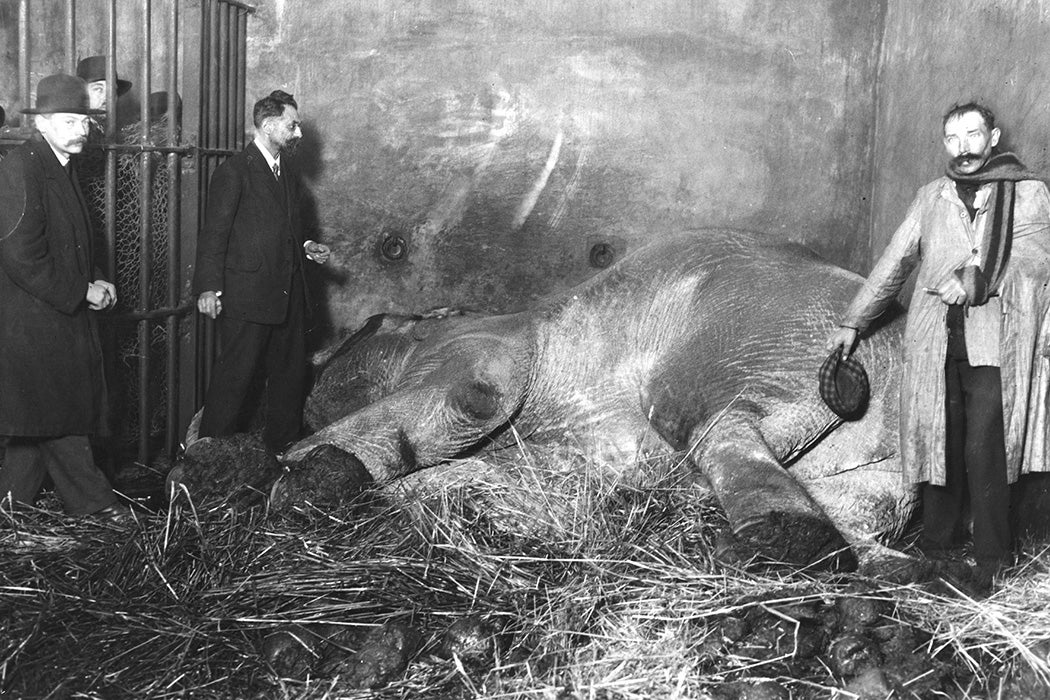A criminal guilty of killing several men is brought before an eager crowd to be hanged, electrocuted, strangled, or shot. In the late nineteenth century, historian Amy Louise Wood writes, this scene played out repeatedly. The criminals in question were circus elephants.
At this time, Wood writes, circuses were big business in the United States. Some had more than two dozen elephants. To audiences, elephants were fascinating partly because of their intelligence, long memories, and attachment to each other, and partly because they were viewed as exotic and dangerous—much like the colonized people of the Asian and African continents from which elephants hailed.
Under the strain of confinement and brutal treatment, it was fairly common for the animals to “go mad” and kill or injure their keepers. Earlier in the century, these kinds of incidents were handled either by shooting the animal immediately or by selling them to another circus or zoo.
This approach changed after an 1883 incident in which an elephant named Pilot went out of control during a performance and was pursued and shot. Newspapers reported breathlessly on the incident. Two years later, Albert, a star of the Barnum and Bailey Circus, killed his keeper. Aware of the public fascination over Pilot’s death, the circus conducted a public execution by firing squad before an audience of 2,000.
This version of animal crime-and-punishment emerged at a time when most US states had ended the public executions of human criminals—against the wishes of many Americans who wanted the satisfaction of seeing violent state retribution for themselves.
“In this context, elephant executions could act as a satisfying outlet for these desires,” Wood writes.
Electrocutions of elephants in particular offered a curious public a window into what killing a human in the same fashion behind closed doors might look like.
In 1894, when an elephant named Tip killed several men and continued to threaten others, the New York Times reported that a “jury” of park commissioners “tried and convicted him,” leading to execution by poisoning. In other cases, circus officials claimed that they were attempting to deter other elephants from lives of crime by having the miscreant strangled in front of them.
Weekly Newsletter
Wood writes that discussions of killer elephants mirrored shifting attitudes toward human criminals. On one hand, some accounts described the animals as “monstrous” or “demonic.” On the other, some argued that their behavior was the result of mistreatment. As with human killers, the public might sympathize with the criminal’s difficult circumstances while also demanding retributive violence.
Reformers sometimes stopped public executions of elephants out of the same concerns that had prompted the end of their human counterparts. The president of the Illinois Humane Society objected not to the planned 1896 electrocution of Gypsy the Elephant itself but to staging the event as entertainment—which he called “barbarous,” “revolting,” and “not conducive to public morals.”
By the early 1900s, elephant executions were mostly a thing of the past, though they continued sporadically in small southern and midwestern towns through the 1920s.
Support JSTOR Daily! Join our membership program on Patreon today.







